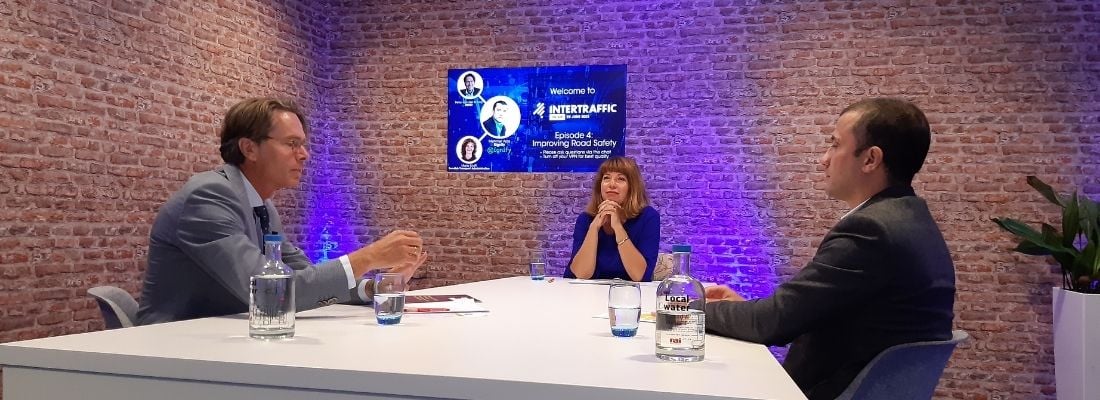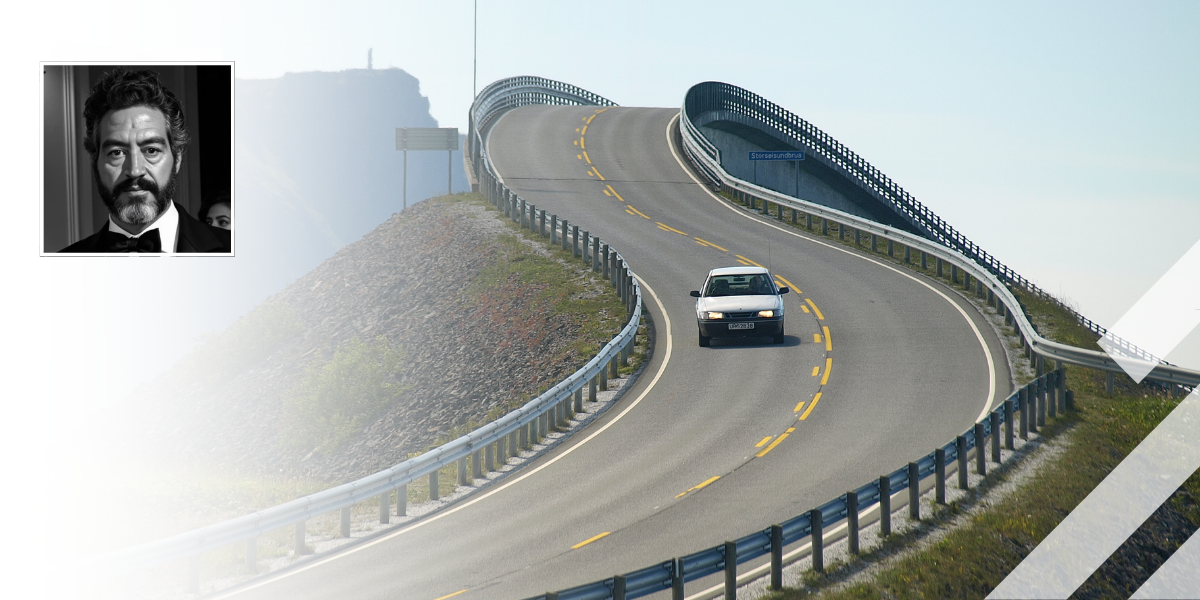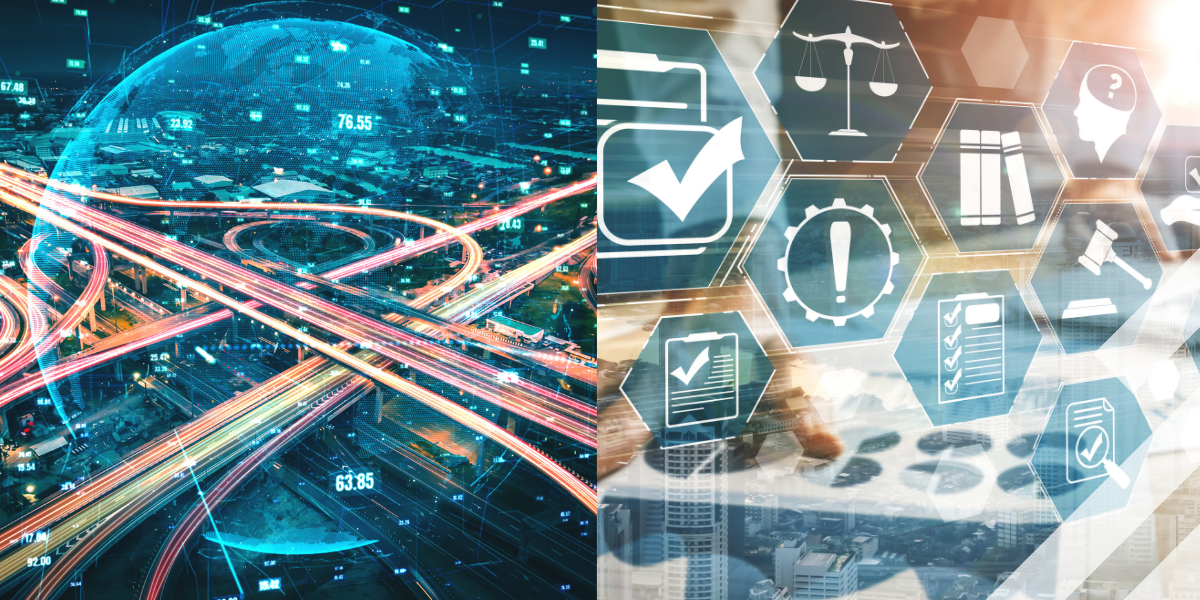Intertraffic ON AIR Episode 4: Improving Road Safety

Working towards Vision Zero
The only way to practical, feasible way to drastically reduce the number of traffic victims the implementation and employment of a 'vision zero’ and ‘safe system' approach in which the entire design of traffic and the lay-out of road and cycle infrastructure is centered around the most fallible and vulnerable road users: humans. According to the OECD, pioneers Sweden and The Netherlands introduced a proactive, integral approach in the 1990s, using labels as 'Vision Zero' (Sweden) and 'Sustainable Road Safety' (NL). What has been done so far, what are the successes and challenges when it comes to road safety and what kind of new smart roadside equipment and driver assistance systems have been developed to improve road safety? Three road safety experts discussed opportunities and hurdles we still need to overcome with host Marinda Hall.
Maria Krafft, Swedish Transport Administration’s director of Traffic Safety and Sustainability, also PhD and Associate Professor in Traffic Medicine at Umeå University in Sweden, has a plain and simple message.
Vision Zero
“Follow the rules of Vision Zero. Look what happened with the introduction of seatbelts.” Road deaths in Sweden have dropped dramatically over the past 20 years and while the technology designed to save lives and prevent serious injuries have to take a great deal of credit, they are only effective if drivers change their habits, stick to the rules and follow the guiding principles of Vision Zero.
“You need a speed management plan that is measurable and easy to follow, and you need the safety market to be stimulated - the EuroNCAP safety ratings are a perfect example.” Krafft also maintains that it is crucial to create a traffic safety footprint as road safety is, ultimately a question of sustainability.
“We have climate footprint goals - traffic safety footprint goals would be presented in exactly the same way.”
“As of today only 3% of road lights is connected.”
For Mehmet Aras, Global Segment Leader Transportation and Smart Mobility, at intelligent lighting specialists Signify, the emphasis for improving road safety and cutting the number of humans killed or seriously injured is on identifying and implementing the right light - and on demand.
Citing a solution to the Netherlands’ poor record of lighting in tunnels, Signify’s Interact portfolio of tailor-made software applications unites connected lighting systems and the data that those systems collect with your intelligent building, smart city, and other Internet of Things solutions. “Tunnel safety should be an integral part of Vision Zero,” insists Aras, “A PIARC study revealed that lighting in tunnels is not up to the same standard as it is on other parts of the road network.”
Aras’ vision for The Highways of Tomorrow would see safer, reliable and more efficient highways with focuses on intelligent lighting, safety, the environmental impact, encouraging economic growth and improving road user satisfaction. It’s clearly moving in the right direction as Aras reported that Interact’s connected operations are under way in project sites with 2.5m connected light points in 58 countries.
"With the correct lighting at the right time illuminating the Highways of Tomorrow, Aras believes that the concept has multiple uses. “Why not the Underpass of Tomorrow - or the Tunnel of Tomorrow? Why not today?”
Investing in good infrastructure
Peter van der Knaap, Managing Director of SWOV, the Dutch Institute for Road Safety Research, believes that the Netherlands’ Sustainable Road Safety (SRS) approach will prevent crashes whenever possible and prevent the risk of serious injury as much as possible.
“A Safe Systems approach to road safety would mean that, as an ethical imperative, no human should be killed or seriously injured as a result of a road crash, as the blame lies partly with the system. People make mistakes - they don’t deserve to be killed because of a mistake. Once this imperative is accepted we will no longer blame the driver but will look to change the system.”
Van Der Knaap and SWOV’s vision is clear: in a sustainably safe road traffic environment the infrastructural layout considerably reduces the risk of crashes.
“In case crashes do still occur, the process that determines the crash severity is conditioned in such a way that serious injury is virtually excluded. Protagoras’ assertion that ‘man is the measure of all things’ is used as the point of departure. Nearly all crashes have their origin in human error. Hence, the purpose is clear:
(1) to reduce the number of errors that are committed by providing clear traffic rules and road design and at the same time; and
(2) to construct infrastructure and vehicles in such a ‘forgiving’ way that errors do no longer have fatal consequences.”
“For every €1 spent on road safety you get €3-4 back in benefits and measurable sustainability.”
In Van Der Knaap’s opinion safe driving is a behavioural change and a change that should be inherently provoked.
“For every €1 spent on road safety you get €3-4 back in benefits and measurable sustainability,” he argues. “Road safety innovations are good value for money as they have many social benefits.
“Human factors are the primary focus: by starting from the demands, competencies, limitations and vulnerabilities of people, the traffic system can be realistically adapted to achieve maximum safety.”
Watch the full episode of Intertraffic ON AIR
In case you registered, you can watch the full episode here



